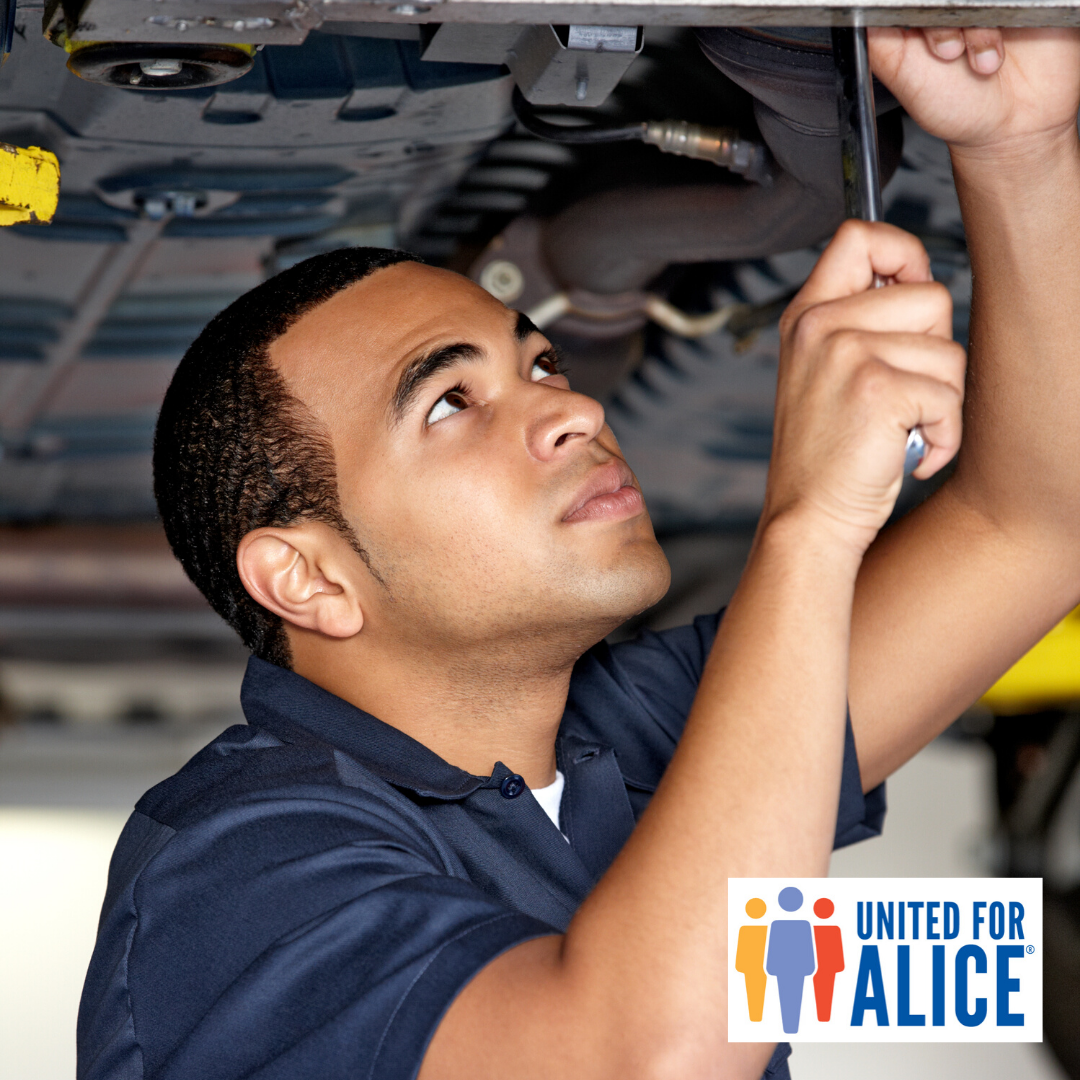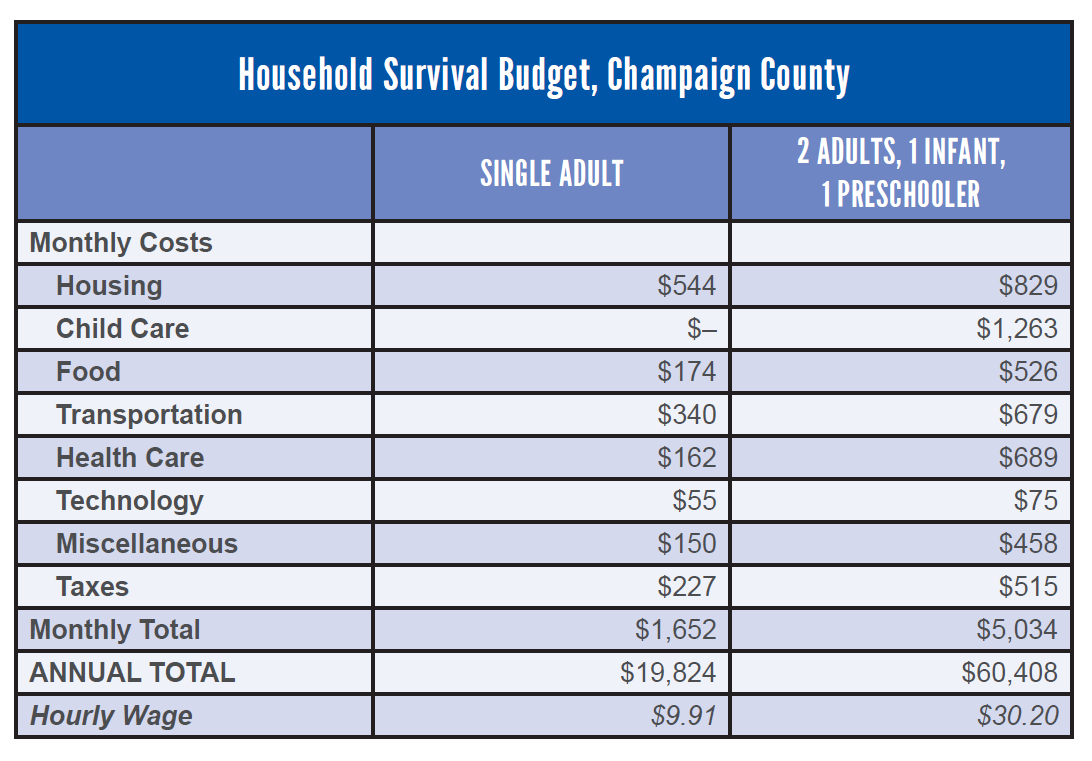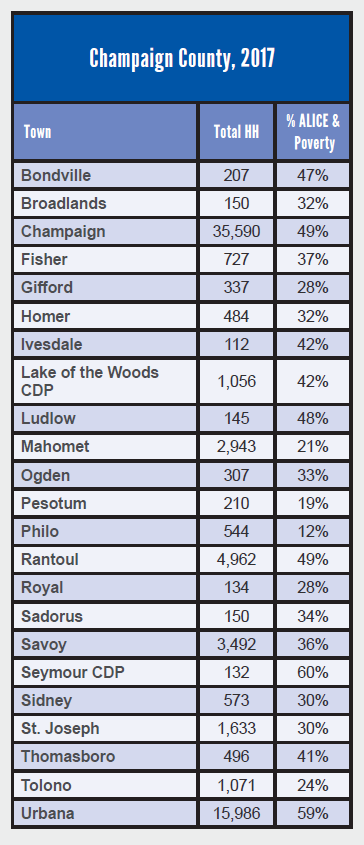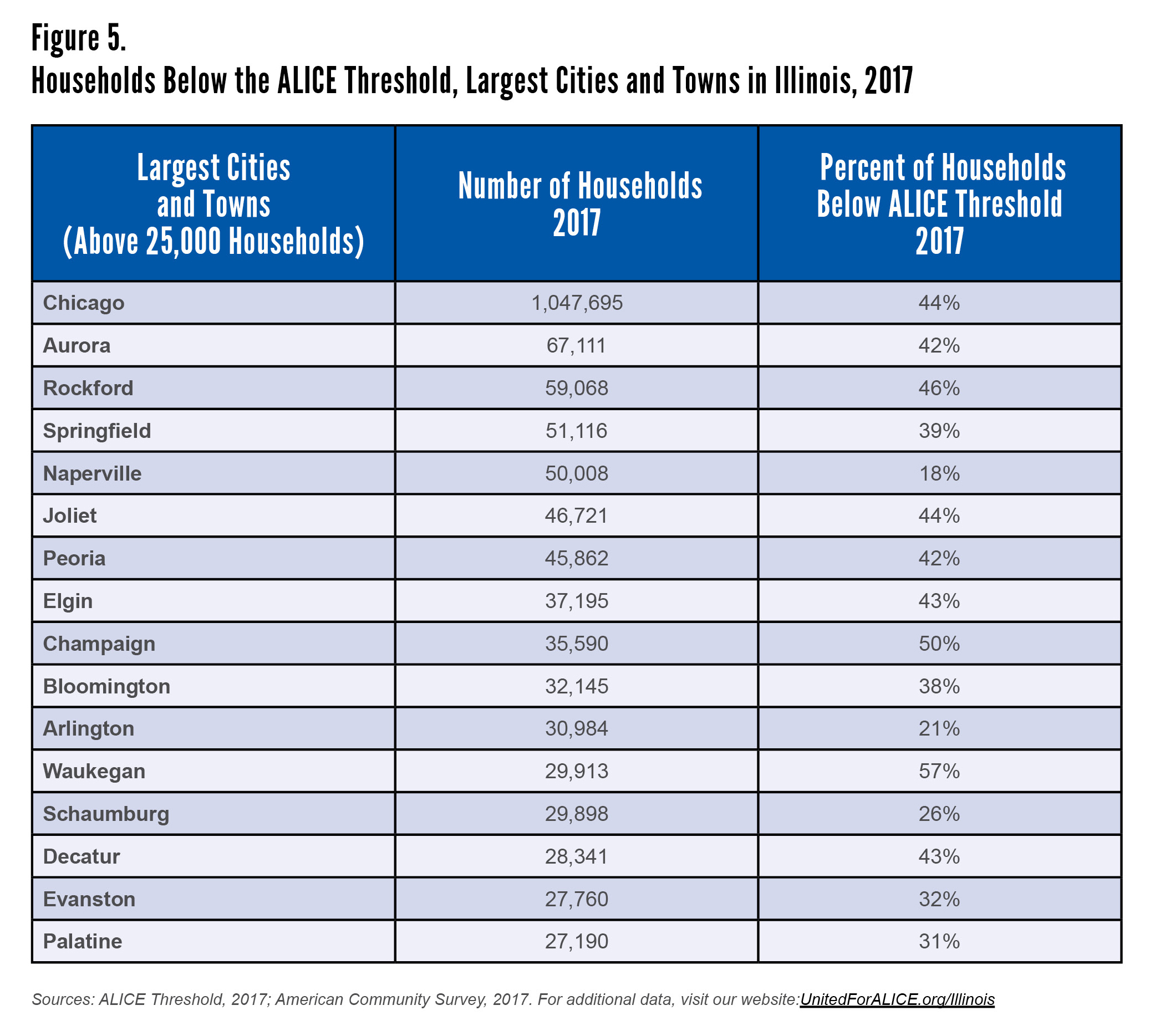
Who is ALICE?
ALICE, an acronym for Asset Limited, Income Constrained, Employed, is a new way of defining and understanding the struggles of households that earn above the Federal Poverty Level, but not enough to afford a bare-bones household budget.
For far too many families, the cost of living outpaces what they earn. These households struggle to manage even their most basic needs - housing, food, transportation, child care, health care, and necessary technology.
When funds run short, cash-strapped households are forced to make impossible choices, such as deciding between quality child care or paying the rent, filling a prescription or fixing the car. These short-term decisions have long-term consequences not only for ALICE families but for all of us.
Read the ALICE report here.

What does the ALICE report tell us?
The cost of basic needs outpaced the rate of inflation and wage growth, rising 27 percent in Illinois to $19,212 annually for a single adult and 38 percent to $57,144 for a family of four with an infant and preschooler.
Meanwhile, median earnings only increased by 12 percent during the same period. The result is that the number of ALICE households grew from 1,077,153 in 2010 to 1,156,884 in 2017, a 7.4 percent increase and nearly double the number in poverty. ALICE is defined as those households earning above the poverty line but less than a basic cost of survival. When combined with households in poverty, 36 percent of Illinois households can’t afford basic bills, according to the report.
In addition, major findings include:
- The biggest drivers of cost increases for families since the end of the recession are health care (up 69%), housing (30%) and child care (35%).
- With 49% of the private sector employed by small businesses, these employees face greater financial risks with lower average salaries that do not meet the survival budget for a family.
- 1/3 of households headed by adults 45 to 64 years old can’t make ends meet. It is surprising to see so many households in their prime earning years with income below the ALICE Threshold.
ALICE in Champaign County
In Illinois, where the cost of living varies by region, it is especially important to have a current and realistic standard that reflects the true cost of economic survival and compares it to household incomes across each county. The ALICE Threshold is a realistic standard developed from the Household Survival Budget, a measure that estimates the minimal cost of the six basic household necessities — housing, child care, food, transportation, health care, and a basic smartphone plan.
The Household Survival Budget reflects the bare minimum that a household needs to live and work today. It does not include savings for emergencies or future goals like college. In 2017, costs were well above the Federal Poverty Level of $12,060 for a single adult and $24,600 for a family of four.
A family of four (2 adults, 1 infant, 1 preschooler) would need to earn $60,408 to survive in Champaign County. That's an hourly wage of $30.20 for one working adult ($15.10/hour if both adults are working). Champaign County's survival budget is 5% higher than the state average.

The ALICE report provides detailed community-level data. It highlights the disparities that exist across our community. Philo has just 12% of households who are ALICE or poverty. But just six miles north on Route 130, Urbana has 59% of households who are ALICE or poverty.

Among large cities in Illinois, the City of Champaign has the second-highest percentage of households below the ALICE threshold - 50%. Only Waukegan has a higher percentage of ALICE households.

The strength and vitality of our state is dependent on all its residents having what they need to support their families and plan for the future. United Way of Illinois and its members across the state work with local social service providers, business and faith leaders, and our partners in state and local government to address the needs of ALICE. An investment of time, energy, and resources in ALICE is an investment in our communities. With 44 local United Ways across the state, we are uniquely situated to take the detailed, local data in this Report and translate it into action that will engage stakeholders at every level. Human service providers, philanthropists, and corporate, government, and faith leaders all have a role to play in addressing ALICE’s struggles. Let’s get to work!

